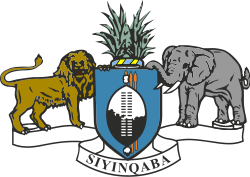Swaziland- Second National Communication
Project Overview
The creation of a National Communication offers countries the opportunity to contribute with technically sound studies and information that can be used for designing mitigation and adaptation measures, and project proposals that can and will help increase their resilience to the impacts of climate change. Activities generally include: V&A assessments, Greenhouse Gas Inventory preparation, Mitigation Analysis or Education, and awareness raising activities.The ultimate goal is the integration of climate change considerations into relevant social, economic and environmental policies and actions.
Key vulnerabilities identified in Swaziland's Second National Communication (2012):
- Agriculture
- Water Resources
- Biodiversity
- Forests and Land Use Change
- Public Health
Project Details
Potential Adaptation Measures identified in Swaziland's Second National Communication (2010):
Agriculture
- Shifting planting periods involving research for planting dates and other management factors.
- Drought resistant crops through diversifying cropping pattern and focussing on drought tolerant crops, through selection, testing and introducing crops such as cassava, pigeon pea, sisal, herp, sorghum, oil seeds such as cotton, sunflower and groundnuts and leguminous crops.
- Locational change of livestock production through redistributing livestock according to suitability of AEZ by selecting animal according to their tolerance to changed climatic conditions for example concentrate beef cattle in lower, Middleveld and Lowveld because they have a high maximum temperature for performance inhibition, and concentrate daily cattle mainly in the Highveld and upper Middleveld where it is cooler
- Irrigation support through developing small dams primarily for livestock and domestic water with supplementary irrigation for horticulture.
Water Resources
- Reduction of water consumption at all levels through efficient water utilisation using water demand managements
- Systems installed to predict and prevent effects of floods, droughts and tropical cyclones as well as for indicating the planning dates to coincide with the beginning of the rainy season for water related infrastructure
- Integrated water resource management carried out in the country with establishment of river basin authorities and focusing on sectoral integration that takes into account competing and conflicts among various users and, geographical and economic social and environmental considerations
- Introduced as a source of water for domestic, livestock and irrigation leading to increased crop production and food security especially under climate change
Biodiversity
- Restructuring the management of biodiversity
- Strengthening of the national commitment to conserve Swaziland biodiversity
- Investment in protection of ecosystems and their services
- Building of innovative and adaptive biodiversity governance systems
- Mitigation options
- Improvements of the understanding of the impacts of climate change on biodiversity
- Awareness of climate change impacts and capacity to respond strategy
- Minimising the impacts of climate change on aquatic and semi aquatic species, communities and ecosystems, and indigenous terrestrial species
- Impact of alien and invasive organisms on biodiversity in future climates and factoring the impacts of climate change on biodiversity into natural resource management and land use planning
Forests and Land Use Change
- Sustainable forest management developed and introduced to communities and all stakeholders
- Commercial forest companies and individual growers develop and introduce forest management practices that maintain biodiversity
- Sustainable expansion of industrial forest areas in those locations in the Highveld with sufficient rainfall and low potential for other agricultural use
- Integrated fire management framework involving assessment of laws and policies, fire prevention and education, fire preparedness and response, ecosystem restoration, recovery and maintenance and adaptive management, research and information
- Alien invasive plant species comprehensive program using a variety of methods, including mechanical clearing, the use of herbicides and biological control.
- Proper selection of suitable tree species on the basis of community needs for each of the ecological zones with research for specific tree species meeting specific situations
- Improved infrastructure design for roads, bridges, dams and water reservoirs, and for housing to provide some comfort under possible increased temperatures
Key Results and Outputs
- Sustainable development and the integration of climate change concerns into medium- and long-term planning
- Inventories of anthropogenic emissions by sources and removals by sinks of greenhouse gases
- Measures contributing to addressing climate change
- Research and systematic observation
- Climate change impacts, adaptation measures and response strategies
- Education, training and public awareness
Reports and Publications
Assessments and Background Documents
Monitoring and Evaluation
In 1992, countries joined an international treaty, the United Nations Framework Convention on Climate Change, to cooperatively consider what they could do to limit average global temperature increases and the resulting climate change, and to cope with whatever impacts were, by then, inevitable.
Parties to the Convention must submit national reports on implementation of the Convention to the Conference of the Parties (COP). The required contents of national communications and the timetable for their submission are different for Annex I and non-Annex I Parties. This is in accordance with the principle of "common but differentiated responsibilities" enshrined in the Convention.
The core elements of the national communications for both Annex I and non-Annex I Parties are information on emissions and removals of greenhouse gases (GHGs) and details of the activities a Party has undertaken to implement the Convention. National communications usually contain information on national circumstances, vulnerability assessment, financial resources and transfer of technology, and education, training and public awareness.
Since 1994, governments have invested significant time and resources in the preparation, collection and validation of data on GHG emissions, and the COP has made determined efforts to improve the quality and consistency of the data, which are ensured by established guidelines for reporting. Non-Annex I Parties receive financial and technical assistance in preparing their national communications, facilitated by the UNFCCC secretariat.



